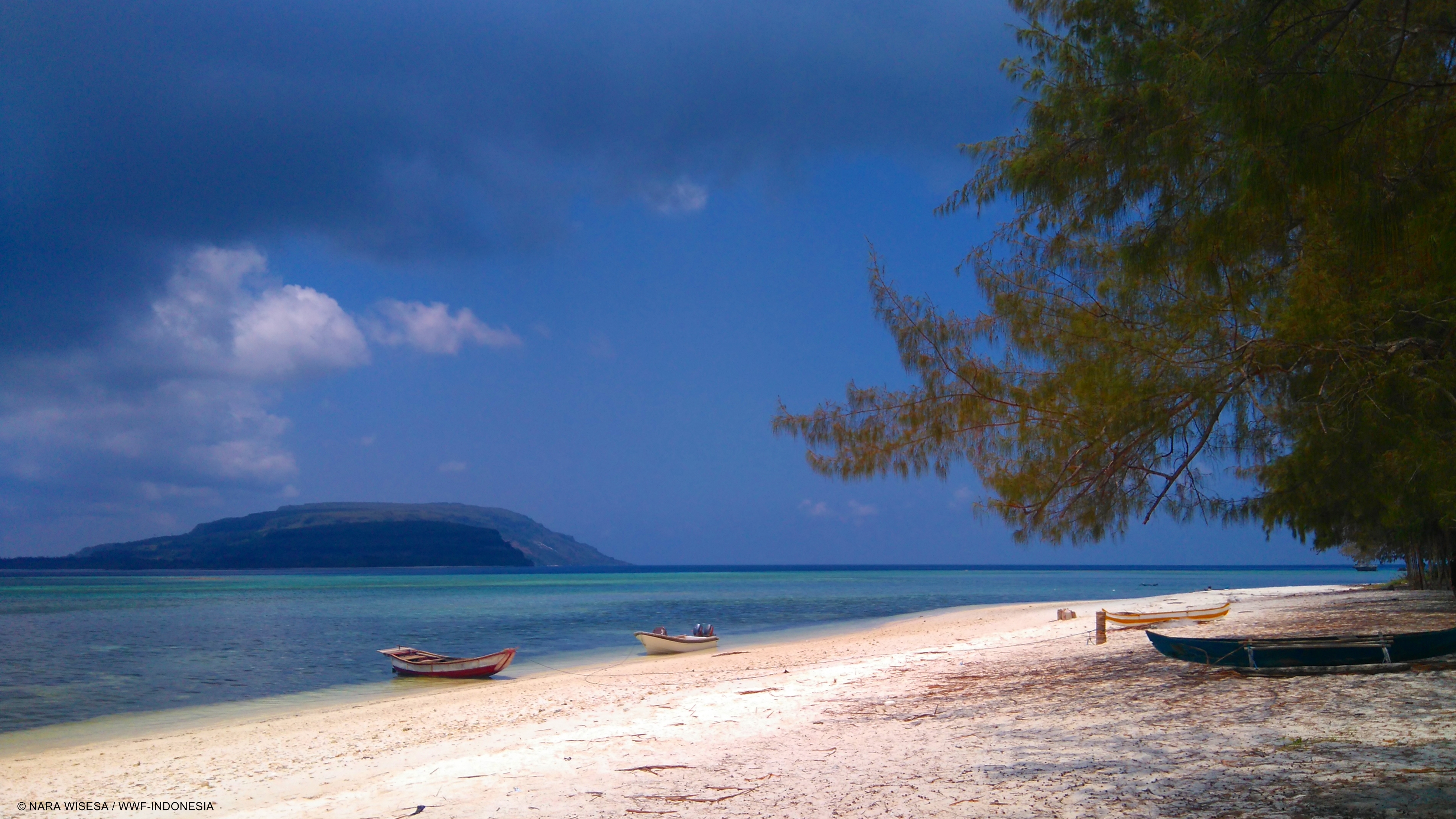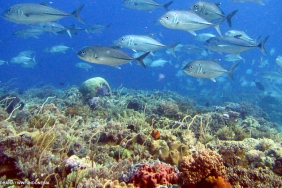#XPDCMBD: TUNA RIDING MOTORCYCLE
Author: Noverica Widjojo (WWF-Indonesia)
Kisar Island was the location visited by the Southwest Maluku Expedition Team today (4/11). From a distance, you can see a harbor dock that is used as a place to dock pioneer ships and ferries. There are no villages on the island at all. The appearance of the island also seems arid, hot, there are rarely trees, and there are many appearances of large walls of coral rock.
When we arrived at the pier and traveled about 1.5 kilometers by land using a bus owned by the Sea Transportation Agency to one of the sub-district offices, we saw a small town full of well-equipped buildings - such as government offices, schools, markets, kiosks, and banks - complete with quite dense human activities. For those of us who use certain cell phone providers, we can receive signals including for internet connection, although it is quite limited.
After stopping and discussing at the Sub-district Office of the Outer Islands, we were accompanied by three sub-district employees to the fish market in Kisar. The fish market, which is relatively small, is located next to the people's market. It contains only small stalls shaped like huts. There wasn't much fish for sale when we approached, because after being caught by the fishermen, the fish are immediately brought to the market by several sellers - known locally as 'paku lele' - who have been waiting for hours or even days at the port. When they arrive at the market and are cleaned, the sliced fish are immediately sold out.
In about an hour, the Land Team went around conducting a quick survey at the fish market and was ready to return to the bus to leave for Yawuru Hamlet in Wonreli Village. But as we walked towards the bus, some of us suddenly stopped and paused for a few moments, unsure of the 'sight' we were seeing as it was not normal for big city dwellers like us. There were two young Kisar women wearing brightly colored T-shirts, shorts and hats; riding motorcycles; and carrying a Yellowfin Tuna (Thunnus albacares) about a meter in size, which was placed on the footrest like a suitcase! Still worried that I was mistaken, I turned to Nara to reconfirm this. Before I could ask my question, Nara seemed to have already taken my thoughts and said, "Yes Ver, it's a tuna that's being carried around like a suitcase."
I immediately ran after the 'tuna on a motorcycle' to document this unique 'sight'. Unfortunately, it wasn't just me who was running after it. Potential buyers who had been waiting for a long time at the fish market, immediately approached the stall owned by a grandmother, where the tuna was cleaned by the two women who were 'catfish spikes'. After being cleaned and sliced, the fish, which was only caught for the consumption of Kisar residents, was sold out in less than an hour. This proves how high the fish consumption is on Kisar Island, where the majority of the residents are 'garden fishermen' (being garden farmers during the west season, going fishing during the transitional season).





